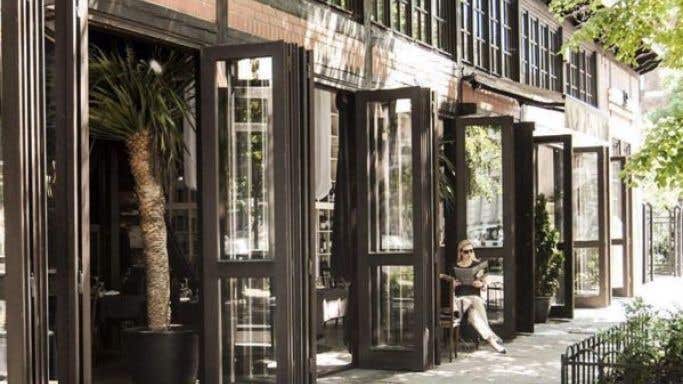A version of this article is also published by the Financial Times.
Chefs, restaurateurs and their backers have a habit of grouping together. Perhaps this is for safety when they open. Later on it is to avoid disappointment for the customer as they prosper. Eventually, this leads to longevity in the case of several notable restaurants that have now entered a stable middle age.
But I did not expect this to be the case in Cracow, southern Poland. When I accepted the invitation to be interviewed in front of over 80 local restaurateurs brought together by Nespresso, I was right to anticipate that the most frequently asked question would be about how far behind the best in London I considered them to be. To which my answer was five years but I expected them to catch up in three.
I didn’t, however, expect the quality of the food served during the day by 10 different chefs to be so exciting. Nor did I expect that the interest in wine, most clearly exhibited by Adam Pawlowski MS now back home after six years at Northcote Manor, Lancashire, would be so widespread. Nor, in fact, that the sheer enthusiasm of all of the participants would be so infectious.
Two particularly enterprising restaurants, Studio Qulinarne and Bottiglieria 1881, are within 200 metres of each other in the formerly heavily Jewish part of the city. These two restaurants also share uncommon talent in their young chefs: Oskar Zasuń, only 24, at the former and Paweł Kras, 28, at the latter.
The credit for the success of Studio Qulinarne initially must be put down to the farsightedness of designer Katarzyna Grüning, who first saw this unusual building back in 2010. Built in 1928 as a bus depot, it initially interested Grüning as a studio. It has a high ceiling, wooden walls and a series of folding doors on to the street (pictured) that must make it a haven when the sun shines. But inspired by the effects on the city of inexpensive travel, today the single most important factor in pushing culinary standards higher everywhere, she looked at giving this space broader appeal.
Certain of Studio Qulinarne’s charms are down to Grüning’s eye, most notably the bookcase and the piano, but a great deal of the restaurant’s appeal is owed to the talents of its chef. Zasuń started here as it opened and has today progressed to the position of head chef, the consequence of hard work, taste and an obvious willingness to please.
These were talents he exhibited in all three guises as he came to the table I shared with four local food bloggers. The first was exemplified in a series of cold starters: a confit of duck with marinated beetroot; a stunning small ball of cherry wrapped around foie gras; a tuna tartare that would have been better served somewhat cooler; and a plate of Polish cheeses that included a Parmesan type made from goats’ cheese.
Excellent as these were, they were outshone by the main course and dessert. The former comprised a saddle of rabbit, cut into three and served inside a shallot section on a base of lovage and brown butter. The dessert was a small chocolate mousse combined with bitter caramel on to which a strawberry consommé was poured. This was poured deliberately slowly in my case, as I made a point of being the last to finish this delightful combination.
At least Zasuń starts with a reasonably sized professional kitchen, which is more than can be said of the approximately two square metres that are at Kras’s disposal. But Bottiglieria 1881 is more complex, as one of its partners, sommelier Michał Jancik, explained during the afternoon. ‘We prosper because our customers eat and drink here and, most importantly, also buy wines to take away.’
There is an enormous show of wines on offer, with a preponderance of wines from Piemonte and the Veneto in northern Italy, the regions that first attracted its owner, the tall, bearded charismatic Robert Gumulinski when he decided to put the money he has made from his original fruit business into somewhere that is both more solid and more liquid. Solid because he is now the building’s freeholder, so that he could carry out the obviously costly renovations that allow the basement cellar to take in chilled air from the roof to keep the temperature there a cool 15 ºC. It is more liquid because bottles of wine seem to be available at every opportunity and price point, although not a single beer is on offer.
There is some very good food, nonetheless. Kras has organised his tiny kitchen to great effect so that close to his four heat lamps is a closed, cool cabinet that houses the slates of goats’ cheese and small cubes of veal that acted as an intelligent amuse-bouche. Then came spaghetti carbonara, finished with a drizzle of Kras’s parsley sauce; two cuts of meat, a pork belly with red cabbage, potato and plums and a breast of guinea fowl with carrots, lovage and gooseberries; and finally two desserts, a slightly over-sweet reconstructed cheesecake with blackberries and a terrific apple dessert with a square of apple jelly laced with Pedro Ximenez sherry.
Cracow’s historic charms already draw many tourists. These two restaurants should attract even more.
Studio Qulinarne ul. Gazowa 4, 31-060 Kraków; tel +48 124 306 914
Bottiglieria 1881 ul. Bocheńska 5 LU 1, 31-061 Kraków; tel +48 602 500 024

